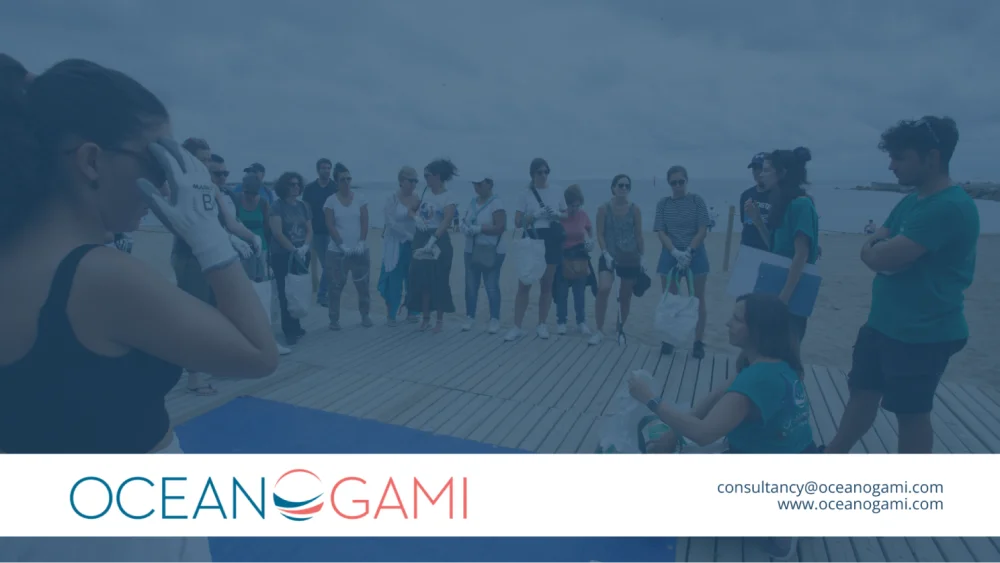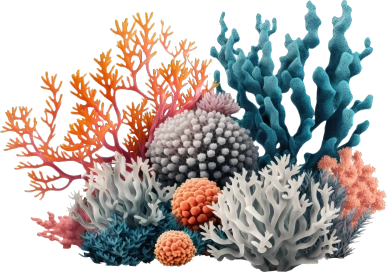What is Marine Plastic Pollution…. Why Should I Care?
In today’s society, we have become addicted to single-use plastics. They are cheap to produce and convenient to use, and once you throw out that cellophane packaging or crinkly shopping bag, they are easy to forget. 430 million tonnes of plastic are produced annually, and less than 10% is ever recycled. Nearly ⅔ of all plastic products are single-use items, and with close to 5 trillion pieces of plastic already floating in our oceans, now is the time to act.
Marine plastic pollution is a multifaceted problem with wide-ranging ecological, economic, health, and ethical implications, and it will require collective action from individuals, corporations, and governments alike.
At a global scale, the United Nations has set in motion negotiations for a new treaty: one that addresses plastic pollution, particularly in the marine environment. The Zero Draft text for this treaty was released in September 2023 and proposes several national and international opportunities to regulate, reduce, and eliminate plastic at every stage of the value chain. At the industry level, large corporations such as Coca-Cola and Amazon have set their own internal targets for reducing plastic usage by way of lowering greenhouse gas emissions.
But what about mid-sized and small businesses? In this blog, we present an IUCN-backed framework to help your company identify and address opportunities to reduce your plastic footprint.
Looking for a simpler way to kick-start your sustainability venture? We also provide a brief list of the top 5 strategies to start incorporating sustainable actions into your business plan.
IUCN Framework: Hotspot → Intervention → Instrument
As a joint venture with the United Nations, the IUCN developed a framework to help local and national governments identify and prioritize solutions to plastic leakage.
This framework advocates for a circular economy strategy which proposes alternatives to the traditional linear economy in which products are made, used and disposed of at the end of their use.
The circular economy model aims to keep resources in use for as long as possible to extract the maximum value from them. This involves recovering and regenerating products and materials at the end of each product’s life.
This tactic can also be employed in the private sector on a smaller scale because the three overarching questions remain the same:
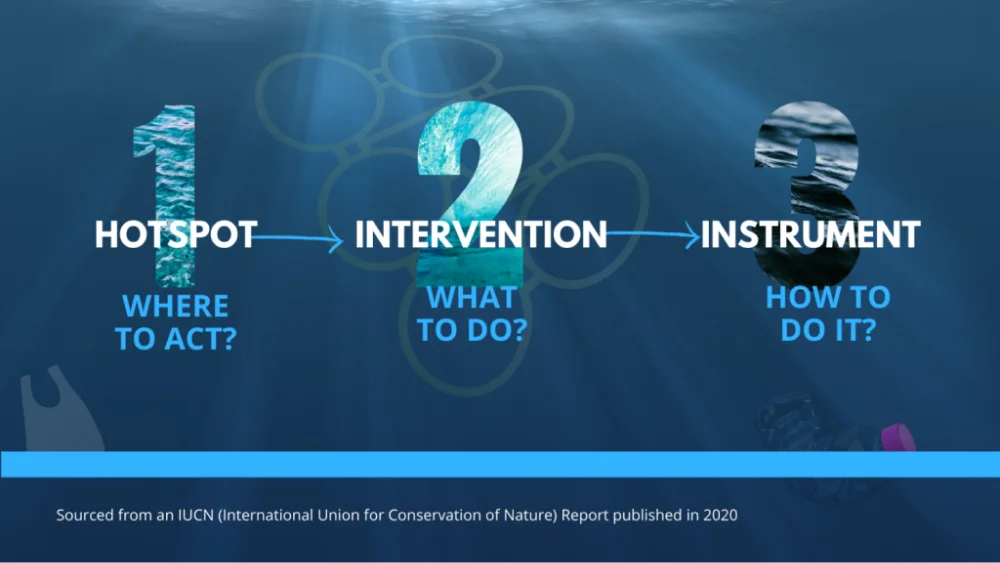
Designed by Oceanogami
#1 The first step is identifying actionable hotspots that can be feasibly addressed within your company’s business scheme. Effective hotspot identification involves addressing three concerns:
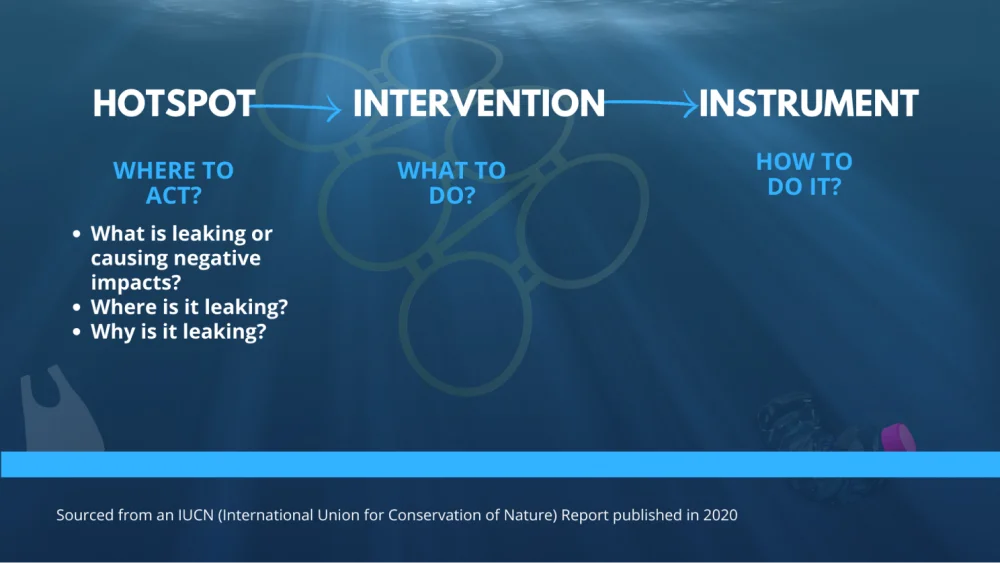
Designed by Oceanogami
An example of an actionable hotspot related to company packaging could be:
- Single-use cellophane wrap used on pallets of products to keep them steady during truck transport is often immediately thrown away because of a lack of reuse options and a lack of recycling bins in distribution centers.
#2 The next step is to determine and prioritize interventions to address each identified hotspot in the plastic value chain. Interventions are actions that can be taken to directly influence physical streams of plastic leakage into the environment.
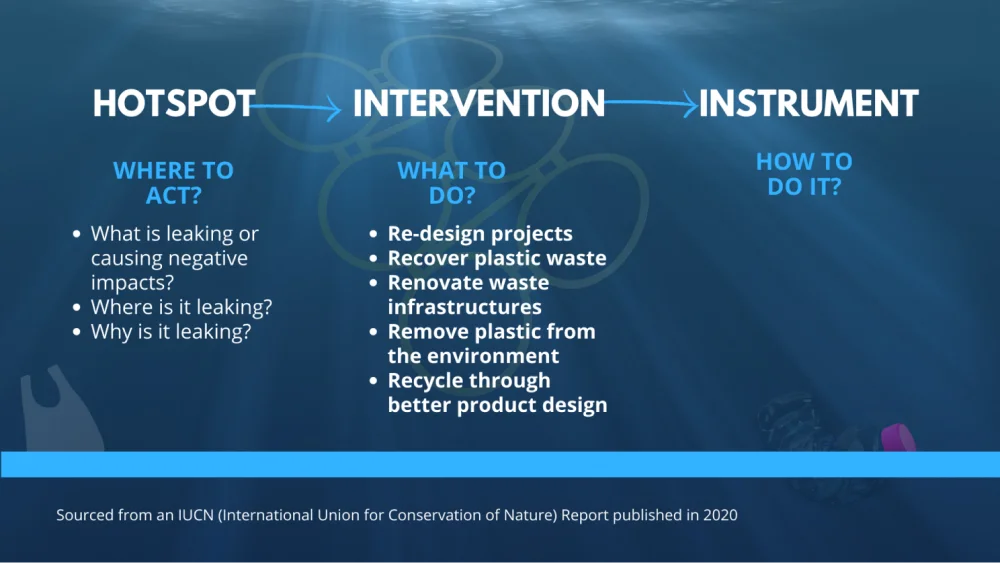
Designed by Oceanogami
For reference, a non-exhaustive list of interventions includes:
- Re-designing projects with eco-friendly materials. Example: Patagonia uses soda bottles and unusable manufacturing waste to create polyester fibers for their clothing.
- Recovering plastic waste through improved collection systems
- Renovating waste infrastructures and refurbishing existing facilities
- Removing plastic from the environment through clean-up operations. Example: Sea2See uses recycled marine plastic including fishing equipment to create sustainable eyewear.
- Recycling through better product design that facilitates disassembly.
#3 Once an intervention (or several) have been identified to address the hotspots, an action-oriented instrument must be selected to accomplish the goal. As defined by IUCN, an instrument is a practical way of implementing an intervention and monitoring progress.
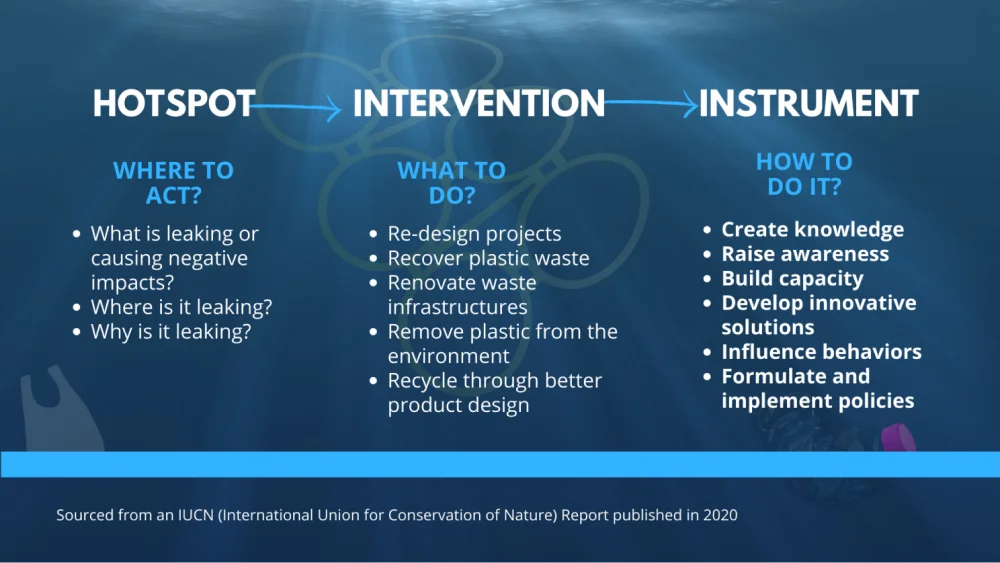
Designed by Oceanogami
Example of instruments include:
- Creating knowledge to better assess plastic leakage and impacts.
- Raising awareness among stakeholders about plastic pollution.
- Building capacity to mobilize resources and skills to tackle plastic leakage.
Oceanogami partners with businesses to increase their capacity to address their marine plastic footprint through workshops and plastic awareness campaigns.
- Developing innovative technological solutions and/or business models to reduce plastic leakage.
- Influencing behaviors regarding plastic pollution through economic incentives or disincentives.
- Formulating and implementing policies and regulation to address plastic pollution.
Top 5 Strategies to Incorporate to Your Sustainable Business Plan
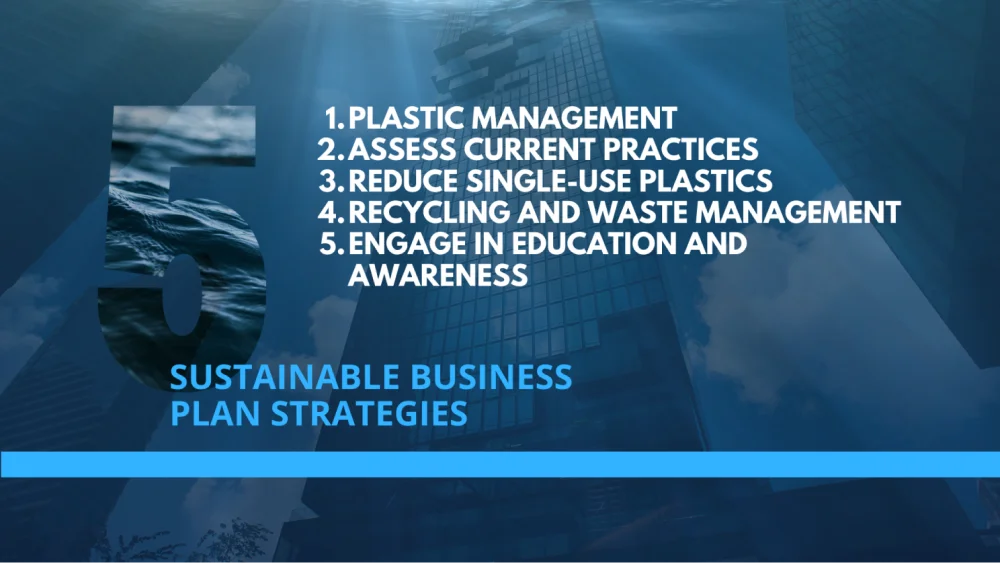
Designed by Oceanogami
- Make plastic management a collective priority and responsibility in your organization: Foster a culture of environmental responsibility by involving employees and stakeholders in your plastic reduction efforts. And, educate them about the importance of reducing marine plastic pollution and allow for an open discussion to brainstorm ideas.
- Assess Current Practices (Production Supply → Waste Management): Conduct a thorough assessment of your current plastic usage, waste generation, and disposal practices to identify areas where you can reduce plastic.
- Reduce Single-Use Plastics: Trade in plastic utensils and a garbage bin for metal silverware and a dishwasher in the company kitchen. Also, rethink product packaging to incorporate eco-friendlier materials, post-consumer recycled plastic, and adopt packaging-free alternatives whenever possible.
- Recycling and Waste Management: Implement effective waste management practices, including recycling and proper disposal with multiple sorting bin options (aluminum, plastic, glass, compost, etc). Ensure all bins are clearly labeled and educate your employees about what can and cannot be recycled. Moreover, stay ahead of the growing movement to hold producers accountable for the disposal of their products by strategizing increased performance and product design to promote durability and recyclability.
- Engage in Education, Awareness, and Outreach: Engage in or sponsor beach and ocean cleanup initiatives like those #Oceanogami organizes. Support and encourage employees to volunteer for such events through recognition and incentives. You can also invest in infrastructure that prevents plastic waste from reaching water bodies (such as trash traps in rivers).
How can Oceanogami help your business?
We offer a variety of corporate packages that combine plastic awareness campaigns on the beach with marine citizen science so that your employees leave feeling empowered to continue addressing marine plastic pollution.
We also provide workshops and environmental talks on reducing plastics and sustainable development goals, among other topics.
Involving the private sector in marine conservation at all levels (small business to large corporations) is imperative to protect marine ecosystems and promote a sustainable blue economy.
At Oceanogami, we are committed to fostering partnerships that promote people, the planet, and profit and lead the change toward healthier oceans for future generations.
